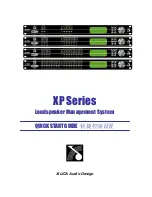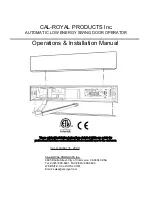
TECNA
S.p.A.
ITEM
TE700 Instruction
Manual
2.7
- OPERATING IN DYNAMIC MODE (DYN)
The DYNAMIC MODE is an adaptive type inverter working mode. This unit is capable of
detecting faulty conditions, during the welding operation, such as the imperfect contact of the
sheets to be welded, presence of impurities between the pieces to be welded, presence of
shunts near the electrodes or wear of the electrodes. After having identified one or more
faulty conditions, the control unit can dynamically modify the welding process to correct said
conditions. The welding process is corrected by extending the welding time up to a max limit
defined by the operator. In DYNAMIC MODE the control unit adjusts the welding current for
the purpose of obtaining a correct weld and avoiding, at the same time, the squirting of molten
material that could lead to welds of lower classes.
Proceed as follows to use the DYNAMIC MODE:
Set the control unit to IK WORKING MODE.
Adjust the welding pressure, the welding current and the diameter of the
electrodes, conforming to the standard tables, to carry out the required weld.
In order to activate the DYNAMIC MODE at the end of the welding procedure, the
PULSE and CURRENT 2 parameters must NOT be set to IK WORKING MODE
otherwise it will not be possible to activate the DYNAMIC MODE.
Check that the electrodes used are in perfect working order.
Spot-weld a sample of material not subjected to anomalous conditions that is to
say with paired sheets, clean and without any shunt spots in the whereabouts.
If the quality of the welding is satisfactory, switch the control unit WORKING
MODE to DYN. The DYN mode may be activated only if the affected weld program
is the same with which the last weld was carried out and if the last weld was
carried out in IK WORKING MODE.
The control unit asks the operator whether or not to activate the DYNAMIC MODE. If the –
key is pressed, the working mode goes back to IK mode whilst if the + key is pressed, the
new WORKING MODE will be DYN.
ACTIVATE DYNAMIC ?
<+> OK <-> CANCEL
After having activated the dynamic mode, the welding parameters inside the program set to
dynamic mode should not be changed by the operator since they are compiled automatically
by the control unit. Should the operator change any of them, this would invalidate the
correcting capacity of the dynamic mode and therefore would entail a new calibration cycle to
work efficiently.
However, it is not possible to undoubtedly assure that the piece has been effectively
welded, as all the conditions and parameters involved in the welding process
execution should be checked.
41/128
















































